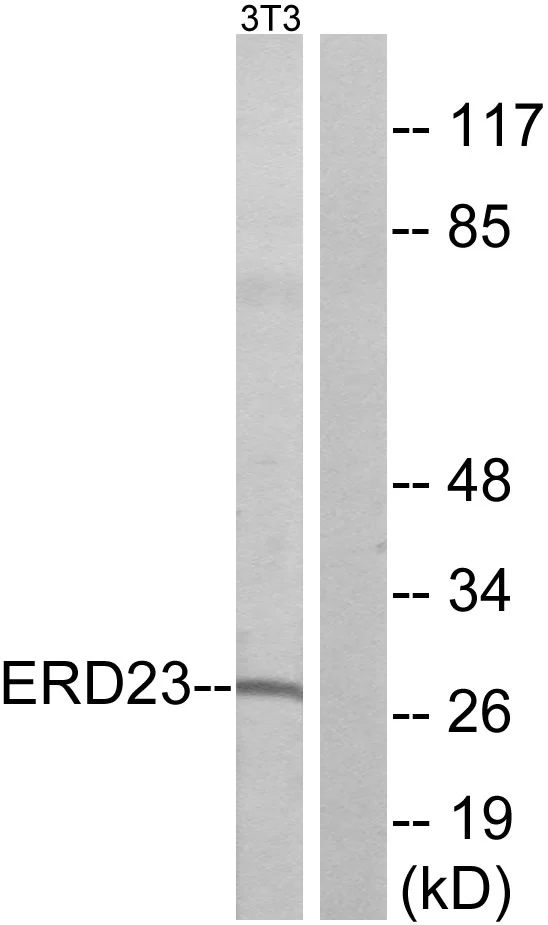
WB analysis of NIH/3T3 cell lysates using GTX87279 KDELR3 antibody. The lane on the right is blocked with the synthesized peptide.
KDELR3 antibody
GTX87279
Overview
- SupplierGeneTex
- Product NameKDELR3 antibody
- Delivery Days Customer9
- Application Supplier NoteWB: 1:500~1:1000. *Optimal dilutions/concentrations should be determined by the researcher.Not tested in other applications.
- ApplicationsWestern Blot
- CertificationResearch Use Only
- ClonalityPolyclonal
- ConjugateUnconjugated
- Gene ID11015
- Target nameKDELR3
- Target descriptionKDEL endoplasmic reticulum protein retention receptor 3
- Target synonymsER lumen protein-retaining receptor 3; ERD2L3; KDEL (Lys-Asp-Glu-Leu) endoplasmic reticulum protein retention receptor 3; KDEL receptor 3
- HostRabbit
- IsotypeIgG
- Protein IDO43731
- Protein NameER lumen protein-retaining receptor 3
- Scientific DescriptionThis gene encodes a member of the KDEL endoplasmic reticulum protein retention receptor family. Retention of resident soluble proteins in the lumen of the endoplasmic reticulum (ER) is achieved in both yeast and animal cells by their continual retrieval from the cis-Golgi, or a pre-Golgi compartment. Sorting of these proteins is dependent on a C-terminal tetrapeptide signal, usually lys-asp-glu-leu (KDEL) in animal cells, and his-asp-glu-leu (HDEL) in S. cerevisiae. This process is mediated by a receptor that recognizes, and binds the tetrapeptide-containing protein, and returns it to the ER. In yeast, the sorting receptor encoded by a single gene, ERD2, is a seven-transmembrane protein. Unlike yeast, several human homologs of the ERD2 gene, constituting the KDEL receptor gene family, have been described. KDELR3 was the third member of the family to be identified. Alternate splicing results in multiple transcript variants. [provided by RefSeq, Jul 2013]
- ReactivityMouse
- Storage Instruction-20°C or -80°C,2°C to 8°C
- UNSPSC12352203
